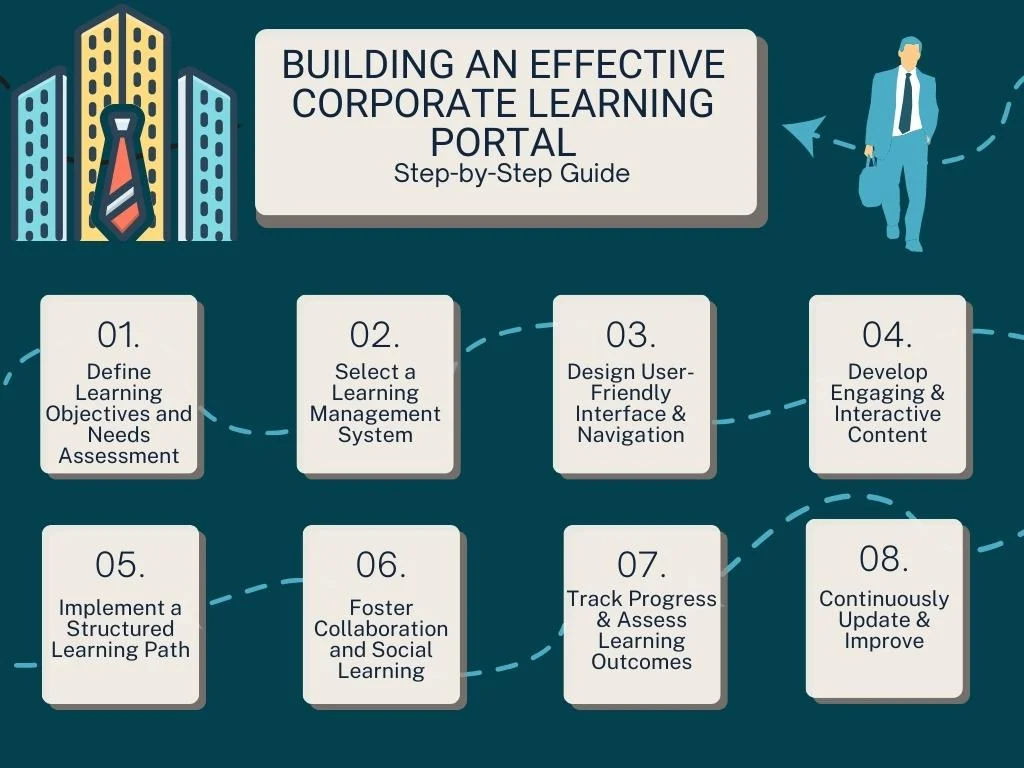Introduction
In today’s fast-paced business environment, organizations recognize the importance of continuous learning and development for their employees. Building an effective corporate learning portal provides a centralized platform for delivering training, resources, and knowledge to enhance employee skills and performance. In this article, we will guide you through the steps to build an effective corporate learning portal that drives engagement, knowledge retention, and organizational growth.
Step 1: Define Learning Objectives and Needs Assessment
Begin by identifying the learning objectives and needs of your organization. Determine the skills, knowledge, and competencies your employees need to acquire or enhance. Conduct a comprehensive needs assessment by consulting with key stakeholders, conducting surveys, and analyzing performance gaps. This will help you align your learning portal with specific organizational goals and ensure relevance to employee development needs.
Step 2: Select a Learning Management System (LMS)
Choose a suitable Learning Management System (LMS) that aligns with your organization’s requirements. Look for an LMS that offers features like content management, user management, progress tracking, assessment capabilities, and reporting. Evaluate different LMS options based on scalability, ease of use, customization options, and integration with other systems used in your organization.
Step 3: Design User-Friendly Interface and Navigation
Create an intuitive and user-friendly interface for your learning portal. Ensure that the navigation is logical and easy to understand, allowing users to access training materials and resources with minimal effort. Organize content into relevant categories and subcategories, making it easy for learners to locate specific courses or information. Incorporate search functionality to enable quick access to specific topics or keywords.
Step 4: Develop Engaging and Interactive Content
Create high-quality and engaging content for your learning portal. Utilize a mix of multimedia elements, such as videos, interactive quizzes, simulations, and case studies, to enhance learner engagement. Consider different learning styles and provide content in various formats, including text-based modules, audio recordings, and visual presentations. Use storytelling techniques and real-world examples to make the content relatable and practical.
Step 5: Implement a Structured Learning Path
Design a structured learning path that guides learners through a logical sequence of modules and courses. Start with foundational knowledge and gradually progress to more advanced topics. Incorporate pre-assessments to gauge learners’ existing knowledge and tailor the learning path accordingly. Provide opportunities for practice and reinforcement throughout the modules to enhance knowledge retention and skill development.
Step 6: Foster Collaboration and Social Learning
Encourage collaboration and social learning within the corporate learning portal. Implement discussion forums, chat features, and social learning communities where learners can interact, share experiences, and seek support from peers. Facilitate virtual instructor-led training sessions or webinars to promote real-time interaction and engagement.
Step 7: Track Progress and Assess Learning Outcomes
Integrate assessment and tracking mechanisms into your learning portal. Use quizzes, tests, and assignments to evaluate learner progress and understanding. Leverage the reporting capabilities of your LMS to generate insights on learner performance, completion rates, and knowledge gaps. Use this data to identify areas for improvement and make necessary adjustments to the learning content or delivery approach.
Step 8: Continuously Update and Improve
Aim for continuous improvement by regularly updating and expanding your learning portal’s content. Stay updated on industry trends, emerging technologies, and new learning methodologies. Encourage feedback from learners and incorporate their suggestions for improvement. Monitor the effectiveness of your learning portal through metrics and analytics, and make data-driven decisions to enhance the learning experience.
Conclusion
Building an effective corporate learning portal requires careful planning, thoughtful design, and continuous improvement. By defining learning objectives, selecting the right LMS, designing a user-friendly interface, developing engaging content, implementing a structured learning path, fostering collaboration, tracking progress, and continuously updating the portal, organizations can create a powerful platform for employee development and drive organizational growth through continuous learning.


